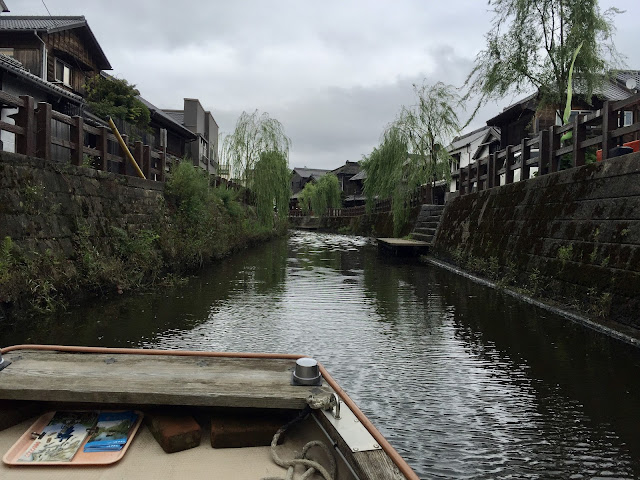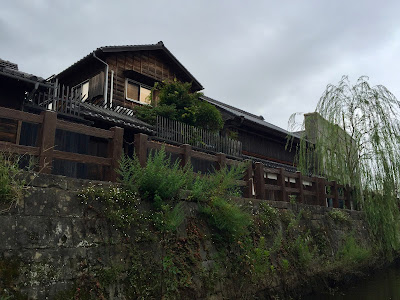On day 2 of my trip to Sawara, I went to a shrine and a temple, and took a boat ride on the Ono River.
Sawara Suwa Shrine
(from the Sawara website)
Suwa Shrine, located west of the Ono River, is an 8-minute walk from JR Sawara Station. Suwa Shrine is said to date back to around 1694, when the local people began developing the land west of the Ono River and started worshipping Takeminakata-no-Mikoto, the god of war, as the region’s protective deity. The current main building of the shrine was built in 1853.
This is the statue of Inoh Tadaka, the man who was the first to travel all around Japan to survey and make an accurate map of Japan, beginning at age 55 after he retired. The bronze statue was erected in 1919.
You need to be ready to go up (and come down) about a million steps at this shrine!
It's hard to see in all the greenery, but there is a large anchor on the slope.
Little Edo Sawara Boat Tour
(from the Sawara website)
Enjoy a relaxing 30-minute boat ride on the calm Ono River, where drooping willows that line both sides solemnly sway in the wind as they lean towards you, welcoming you to the city. Aboard this shallow, motor-powered boat, passengers can enjoy a spectacular view of Sawara’s Historical District from Ono River, a view that one could never see from simply walking through it.
Organized by public officials and private residents in a joint effort to promote tourism and to improve local landscape, this tour begins at a landing deck near Inoh Tadataka Museum and tours the lower reaches of the Ono River. This tour is popular not only among Japanese people, but also among people from all over the world. Operating hours differ depending on the season, so we recommend that you make a reservation in advance.
Organized by public officials and private residents in a joint effort to promote tourism and to improve local landscape, this tour begins at a landing deck near Inoh Tadataka Museum and tours the lower reaches of the Ono River. This tour is popular not only among Japanese people, but also among people from all over the world. Operating hours differ depending on the season, so we recommend that you make a reservation in advance.
The first day in Sawara, the river was too high. On this day (the second day), the river had receded a bit, but there were still some places where we had to get down low in the boat to be able to go under some of the bridges. In September, there was no need for reservations, and the ticket was 1,300 yen per person.
Kanpuku ji Temple
(from the Sawara website)
Kanpuku-ji Temple, located 20 minutes by foot from JR Sawara Station, belongs to the Buzan sect of Shingon Buddhism and is regarded as one of the three great evil-warding daishi temples in Japan, along with Kawasaki Daishi and Nishiarai Daishi. This large temple is said to have been established more than 1,100 years ago and all of the current buildings, excluding the hall that enshrines Bishamon (Bishamondō), were built more than a century ago. Four Important Cultural Properties, including a seated statue of Shakyamuni Tathagata, are stored at this temple. Kanpuku-ji Temple is also the gravesite of Inoh Tadataka (1745-1818), the man who traveled all over Japan on foot to create a map of the country during the Edo period (1603-1867). Additionally, Kanpuku-ji Temple is well known for beautifully representing the four seasons of Japan, with its cherry blossoms in spring, lush greenery in summer, and colorful foliage in autumn.

































































1 comment:
Oh it looks like you had a great time! Boat tours can be so much fun, things look very different as you see them from the river side.
Post a Comment